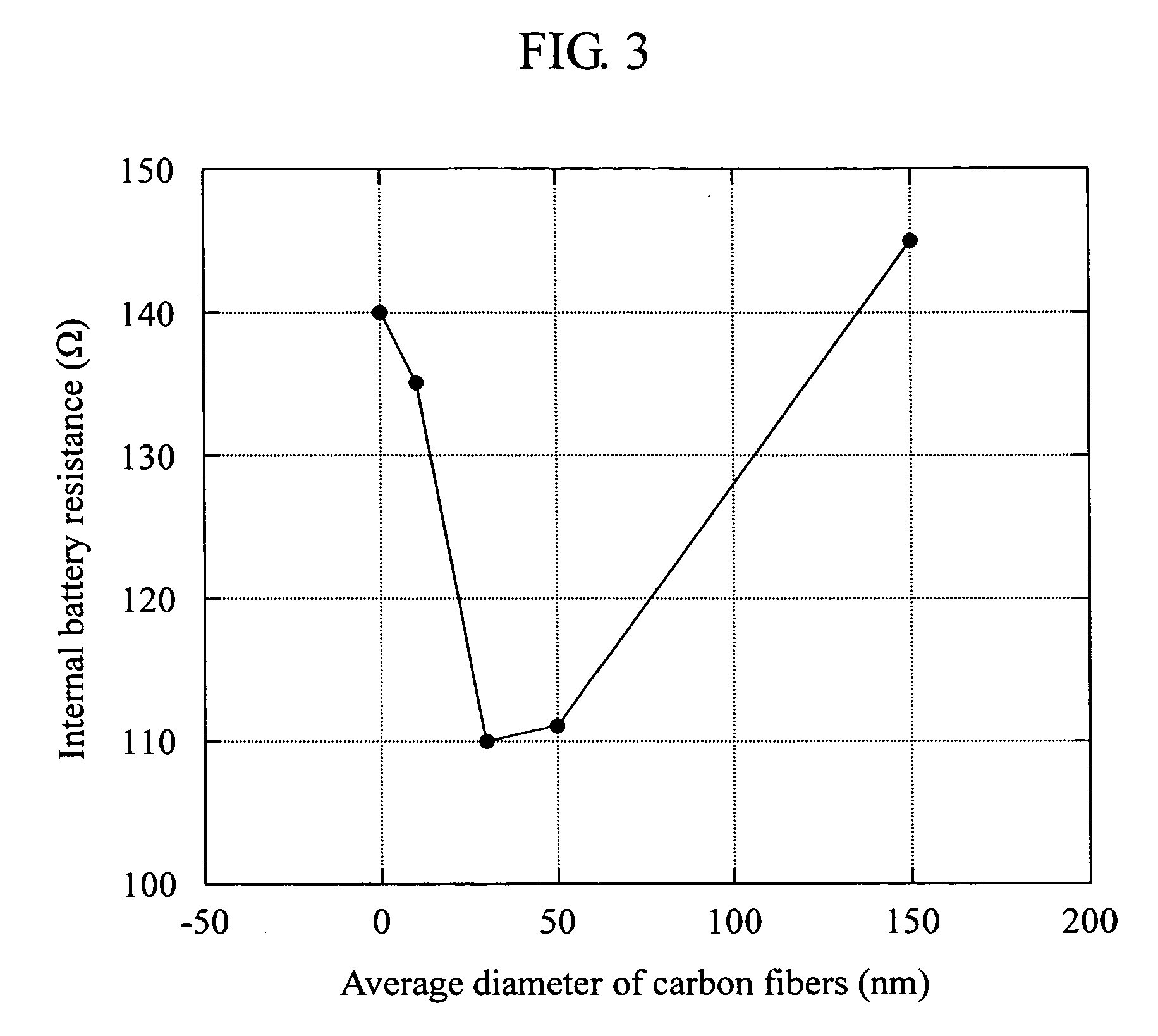Positive electrode material for lithium secondary battery, production method thereof, and lithium secondary battery
a lithium secondary battery and positive electrode technology, applied in the field of new electrode materials, can solve the problems that none of the above-mentioned patent documents has disclosed at all the reduction of electrode resistance at very low temperatures, and achieve the effects of improving the electron conductivity of the whole secondary particle, improving the electron conductivity of the electrode, and excellent electron conductivity in the electrod
- Summary
- Abstract
- Description
- Claims
- Application Information
AI Technical Summary
Benefits of technology
Problems solved by technology
Method used
Image
Examples
example 1
[0039] As raw materials, manganese dioxide, cobalt oxide, nickel oxide, and lithium carbonate were used. These materials were weighed at atomic ratios of Ni:Mn:Co of 1:1:1 and Li:(NiMnCo) of 1.03:1, respectively, and after addition of pure water, pulverized and mixed by a wet process for 5 to 100 hours with a ball mill that makes use of a resin pot and zirconia balls to produce particles with submicron diameters. Then, a solution of polyvinyl alcohol (PVA) was added to the mixed liquid at 2% by weight calculated in terms of the ratio of solid content, mixed for further one hour, and granulated and dried by way of forming predetermined liquid droplets with a spray dryer to prepare particles of 5 to 30 μm. These particles were converted to crystals of lamellar structure by sintering for 3 to 10 hours at 1,000 degrees C. in the air, and then ground to obtain a positive electrode active material (1). After removing coarse particles having a particle diameter larger than 30 μm by classif...
example 2
[0073] In the present example, manganese dioxide, cobalt oxide, nickel oxide, and lithium carbonate were used as raw materials. These materials were weighed at atomic ratios of Ni:Mn:Co of 0.6:0.2:0.2 and Li:(NiMnCo) of 1.03:1, and after addition of pure water, pulverized and mixed by a wet process with the ball mill that made use of a resin pot and zirconia balls to produce particles with submicron particle diameters. A solution of polyvinyl alcohol (PVA) was added to the mixed liquid at 2% by weight calculated in terms of the ratio of solid content, mixed for further one hour, and granulated and dried by a spray dryer to prepare particles of 5 to 100 μm. These particles were converted to crystals of lamellar structure by sintering for 20 to 50 hours at 1,000 degrees C. in the air, and then ground to obtain a positive electrode active material. After removing coarse particles having a particle diameter larger than 50 μm by classification of the positive electrode active material, i...
PUM
 Login to View More
Login to View More Abstract
Description
Claims
Application Information
 Login to View More
Login to View More - R&D
- Intellectual Property
- Life Sciences
- Materials
- Tech Scout
- Unparalleled Data Quality
- Higher Quality Content
- 60% Fewer Hallucinations
Browse by: Latest US Patents, China's latest patents, Technical Efficacy Thesaurus, Application Domain, Technology Topic, Popular Technical Reports.
© 2025 PatSnap. All rights reserved.Legal|Privacy policy|Modern Slavery Act Transparency Statement|Sitemap|About US| Contact US: help@patsnap.com



